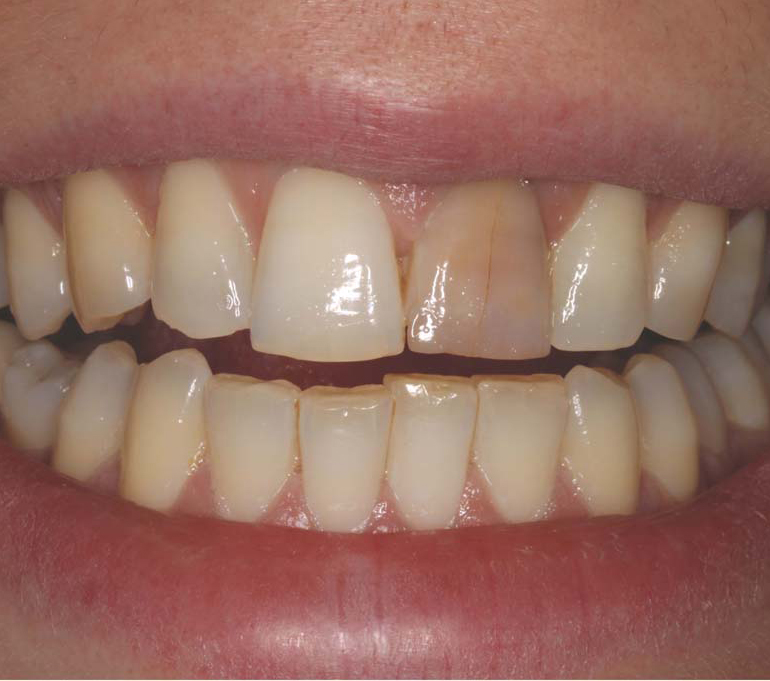
Did You Notice a Root Canal Color Change? Here’s What It Means
Understanding the Importance of Root Canal Color Change
Root canal treatment is a common dental procedure designed to save a tooth that has been severely damaged or infected. By removing the infected nerve tissue and sealing the tooth, this procedure can prevent further infection and maintain the integrity of your natural teeth. However, one potential consequence of root canal therapy is a change in the color of the treated tooth.
Why is Root Canal Color Change Significant?
Understanding and addressing root canal color change is crucial for both aesthetic and oral health reasons:
- Aesthetic Concerns: Discoloration can affect your confidence and smile.
- Underlying Issues: It may indicate underlying issues that may need professional attention.
Importance for Aesthetics and Oral Health
Discoloration of a tooth can be distressing, especially if it affects your front teeth or other visible areas when you smile. While it’s important to feel confident about your appearance, there are also oral health implications associated with root canal color change.
Here’s why recognizing and treating discoloration promptly helps in preserving both the appearance and function of your teeth:
- Early Detection of Problems: Changes in tooth color after a root canal might indicate potential complications such as incomplete removal of infected tissue, presence of bacteria, or even internal tooth resorption (breakdown of tooth structure from within). Identifying these issues early on allows your dentist to address them promptly, preventing further damage or infection.
- Preserving Tooth Structure: Discoloration could also be a sign of internal tooth staining due to factors like blood breakdown products or medication use during root canal treatment. Timely intervention can help minimize staining and preserve the natural appearance of your tooth.
- Avoiding Reinfection: If the sealant used during the root canal procedure fails or there are other issues with the treated tooth, it becomes vulnerable to reinfection. Monitoring any changes in color can help catch such problems and facilitate timely retreatment if required.
Available Treatment Options
In case you notice any color changes in a tooth that has undergone root canal treatment, it is essential to consult your dentist. They will evaluate the situation and recommend appropriate treatment options based on the underlying cause:
- Monitoring: If the discoloration is minor and doesn’t indicate any significant problems, your dentist may suggest monitoring the tooth periodically.
- Internal Bleaching: For teeth with internal staining, your dentist might recommend internal bleaching as a conservative approach to improve their appearance.
- Restoration: In situations where the tooth structure is compromised or there are aesthetic concerns, your dentist may propose restorative treatments such as dental bonding or crown placement to enhance both function and appearance.
Remember, each case is unique, and only a dental professional can provide personalized advice after a thorough examination of your teeth.
Understanding Root Canal Color Change

Root canal-treated teeth can darken over time for several reasons. One primary cause is dentin hypersensitivity. When the dentin layer, which lies beneath the enamel, becomes exposed due to nerve damage or trauma, it can lead to discoloration. This exposure increases the likelihood of pigment deposition within the tooth structure.
Additional Causes of Discoloration
There are other factors that can contribute to the darkening of root canal-treated teeth:
- Residual Pulp Tissue: Sometimes, not all pulp tissue is completely removed during the root canal procedure. Remaining tissue can decay and cause the tooth to darken.
- Post-Operative Inflammation: Inflammation following the procedure can also contribute to color changes. This inflammation may be a response to the treatment itself or an indication of an underlying issue that needs attention.
The Role of Pigment Deposition and Nerve Trauma
Pigment deposition and nerve trauma are significant factors in tooth discoloration after a root canal treatment. When a tooth undergoes nerve trauma, blood vessels within the pulp can rupture, leading to internal bleeding. This bleeding causes pigments from blood cells to deposit in the dentin layer, resulting in a darker appearance.
Understanding these factors helps in recognizing why timely intervention is crucial. Addressing discoloration not only improves aesthetics but also ensures long-term oral health.
If you’re looking for exceptional care and services for dental treatments, FineUp Clinic in Turkey is a premier destination that specializes in providing these services to citizens from around the world.
Common Causes and Factors Contributing to Discoloration After Root Canal Treatment
Root canal treatment can sometimes leave teeth looking less than perfect due to several contributing factors:
- Deadened Dentin: Once the nerve tissue within a tooth is removed during root canal therapy, the dentin layer can become “deadened.” This lack of vitality in the dentin impacts long-term stability and aesthetics. Deadened dentin tends to darken over time, which can be noticeable, especially in front teeth. Preventive measures such as thorough cleaning and sealing of the root canals during the initial treatment help minimize this risk.
- Incomplete Pulp Removal: One significant cause of discoloration post-root canal treatment is incomplete pulp removal. Residual pulp tissue left in the tooth can start to decay, leading to persistent discoloration. Ensuring complete removal of all pulp tissues during the procedure is crucial for maintaining tooth color.
- Darkening Dentin Layer: Changes in the underlying dentin layer also influence the overall color appearance of a tooth following root canal therapy. Even after successful treatment, the remaining dentin can darken over time due to exposure to certain medications or filling materials used during the procedure. Careful selection and application of these materials are vital to reduce this effect.
Addressing these contributing factors requires meticulous attention and expertise during and after root canal treatment, ensuring that patients maintain not only their oral health but also a bright, natural-looking smile.
Treatment Approaches for Root Canal Color Change
1. Porcelain Veneers
Porcelain veneers are a great option for covering up severe tooth discoloration and transforming your smile. These thin shells are made from high-quality dental porcelain and are custom-designed to fit over the front of your teeth, improving their appearance.
Benefits of Porcelain Veneers
- Hides Severe Discoloration: Porcelain veneers can hide discoloration caused by root canal treatments, turning dull or darkened teeth into bright and attractive ones.
- Natural-Looking: The translucent properties of dental porcelain imitate the way natural teeth reflect light, ensuring that your smile looks both beautiful and genuine.
- Long-Lasting: Porcelain veneers are very durable and resistant to stains, making them a lasting option for cosmetic enhancement.
The Process of Getting Porcelain Veneers
- Consultation and Diagnosis: Start with a consultation where your dentist will examine your dental health and discuss what you want to achieve.
- Tooth Preparation: A small amount of enamel is removed from the tooth’s surface to create space for the veneer. This step ensures a snug fit and natural appearance.
- Impressions: Your dentist will take impressions of your teeth to create custom veneers that match your dental structure perfectly.
- Temporary Veneers: While waiting for the permanent veneers, temporary ones may be placed to protect the prepared teeth.
- Bonding: Once the custom-made veneers are ready, they are bonded to your teeth using a strong adhesive. Your dentist will make any necessary adjustments to ensure a perfect fit.
2. Dental Crowns
Dental crowns are important for improving the look and strength of a tooth that has become discolored after a root canal treatment.
Types of Dental Crowns
Porcelain-Fused-to-Metal (PFM) Crowns
- Aesthetics: These crowns look natural and are strong because they have a metal base.
- Durability: They are sturdy because they combine metal with porcelain.
- Considerations: Sometimes, the metal base can be seen through the porcelain, especially near the gums.
All-Ceramic Crowns
- Aesthetics: These crowns give excellent cosmetic results because they closely match the color of natural teeth.
- Biocompatibility: They are ideal for patients who have allergies to metal.
- Durability: While they look great, they may not be as strong as PFM crowns in areas that undergo a lot of pressure.
Benefits of Dental Crowns
- Improved Appearance: Crowns cover up severe discoloration, making your tooth look natural and attractive.
- Stronger Tooth: They make a weak tooth stronger, so it can work well for a long time.
- Perfect Fit: Each crown is made to fit exactly over your own tooth, so it feels comfortable and stays in place.
When deciding which type of crown to get, think about things like how you want your teeth to look, how long you want the crown to last, and whether you have any allergies. Both PFM and all-ceramic crowns are good choices for fixing discoloration after a root canal treatment while also making your tooth stronger and more appealing.
3. Internal Whitening
Internal whitening, also known as non-vital bleaching, is a highly effective method for addressing tooth discoloration that originates from within the treated root canal area. This technique involves lightening the color of a tooth from the inside out, providing a targeted solution for discoloration caused by root canal treatment.
How It Works:
- Accessing the Tooth Interior: The dentist begins by creating an access point to reach the internal chamber of the tooth.
- Application of Bleaching Agent: A specialized bleaching agent is placed inside the tooth’s pulp chamber.
- Sealing and Waiting: The access point is temporarily sealed, allowing the bleaching agent to work over several days.
- Multiple Applications: Depending on the severity of discoloration, multiple applications may be required to achieve the desired shade.
Benefits:
- Targeted Treatment: Specifically addresses discoloration confined to the root canal-treated area.
- Minimally Invasive: Unlike crowns or porcelain veneers, internal whitening preserves more of your natural tooth structure.
- Cost-Effective: Generally less expensive compared to other cosmetic dental restorations like porcelain veneers and crowns.
Considerations:
- Duration: Multiple visits may be necessary for optimal results.
- Color Stability: While effective, ongoing maintenance might be needed to ensure long-term color stability.
Internal whitening offers a focused approach to treating discoloration post-root canal therapy, enhancing both aesthetics and confidence in your smile.
Preventing and Managing Root Canal Color Change: Expert Tips
Maintaining good oral hygiene practices is essential in preventing root canal color change. Brushing twice a day with fluoride toothpaste, flossing daily, and using an antiseptic mouthwash can significantly reduce the chances of discoloration. Regular removal of plaque and food particles helps in keeping your teeth healthy and vibrant.
Attending regular dental check-ups is another crucial step. These appointments allow your dentist to monitor the condition of your root canal-treated teeth closely. Early detection of any signs of discoloration or other issues can lead to prompt treatment and prevent further complications.
Key Practices to Implement:
- Brushing: Use a soft-bristled toothbrush to avoid damaging the enamel.
- Flossing: Reach areas that brushing alone cannot clean.
- Mouthwash: Choose an antiseptic mouthwash to kill bacteria.
- Diet Choices: Limit intake of staining foods and beverages like coffee, tea, and red wine.
Regular professional cleanings remove tartar buildup, which can contribute to tooth discoloration. Your dentist may also recommend specific products or treatments tailored to maintaining the color integrity of your teeth post-root canal therapy.
“Preventive care isn’t just about avoiding cavities—it’s about maintaining the overall health and appearance of your smile”
Implementing these expert tips ensures that your teeth remain healthy and aesthetically pleasing after root canal treatment.
When to Seek Professional Help
Identifying when to seek a professional dental evaluation for a discolored tooth after root canal therapy is vital for maintaining both aesthetic and oral health.
Indicators That You Need Professional Help
- Persistent Discoloration:If the color change in your tooth persists despite good oral hygiene practices, it’s time to consult a dentist.
- Pain or Sensitivity:Experiencing pain or increased sensitivity in the treated tooth can indicate underlying issues that need immediate attention.
- Visible Cracks or Chips:Any cracks or chips in the tooth post-treatment may contribute to discoloration and require professional assessment.
- Gum Inflammation:Noticeable swelling or redness around the treated tooth’s gum area could signify infection or other complications.
- Loose Restorations:If your crown, veneer, or filling feels loose, it can affect the tooth’s appearance and stability.
Why Seek Professional Evaluation?
Professional dental evaluation ensures any underlying issues are diagnosed correctly and treated promptly. Dentists have the expertise and tools to:
- Perform thorough examinations using advanced imaging techniques.
- Identify hidden problems that might be contributing to discoloration.
- Provide targeted treatments such as internal whitening, veneers, or crowns based on your specific needs.
Regular check-ups allow for early detection of any changes, helping maintain the longevity of your root canal-treated teeth. Always consult a professional if you notice any unusual changes in your tooth after a root canal procedure.
Conclusion
Noticing a root canal color change? It’s crucial to consult a dentist promptly. Addressing this issue isn’t just about aesthetics; it’s vital for your long-term oral health. Ignoring discoloration can lead to further complications.
At FineUp Clinic, we offer comprehensive dental care and treatments tailored to your needs. Our team of experts is here to help you achieve a healthy, beautiful smile.
Why address root canal color change?
- Aesthetic Reasons: Enhance your smile’s appearance.
- Oral Health: Prevent potential complications and ensure the longevity of your treated tooth.
Ready to take the next step? Schedule a consultation at FineUp Clinic today. Discuss your concerns about root canal color change and explore the most suitable treatment options available.
FAQs (Frequently Asked Questions)
What is the significance of root canal color change?
The significance of root canal color change lies in its impact on both aesthetic appearance and oral health. Addressing and treating root canal color change is important for maintaining a natural-looking smile and preventing potential complications related to the affected tooth.
How and why do root canal-treated teeth experience darkening in color?
Root canal-treated teeth may experience darkening in color due to factors such as pigment deposition, nerve trauma, and dentin hypersensitivity. These issues can arise from incomplete pulp removal, deadened dentin, or post-operative inflammation, leading to discoloration in the tooth structure.
What are the common causes and factors contributing to discoloration after root canal treatment?
Common causes of discoloration after root canal treatment include deadened dentin, incomplete pulp removal, and changes in the underlying dentin layer. These factors can have long-term implications on the stability and aesthetics of the treated teeth, emphasizing the importance of preventive measures during initial treatment.
How can porcelain veneers effectively address severe tooth discoloration after a root canal procedure?
Porcelain veneers can effectively mask severe tooth discoloration by providing a natural-looking smile transformation. The process involves tooth preparation followed by final placement, offering a cosmetic dental restoration solution for addressing root canal color change.
What role do dental crowns play in addressing discoloration after root canal treatment?
Dental crowns not only improve the aesthetics but also strengthen the structure of a tooth with extensive discoloration after root canal treatment. Different types of crowns are available, each with its suitability for cosmetic enhancement, providing options for managing root canal color change.
Why is it important to maintain good oral hygiene practices in preventing root canal color change?
Maintaining good oral hygiene practices and attending regular dental check-ups are crucial in preventing or detecting early signs of root canal color change. These habits contribute to overall oral health and can help identify any unusual discoloration following a root canal treatment.
When should one seek professional dental evaluation for a discolored tooth after root canal therapy?
It is necessary to seek professional dental evaluation if you notice any unusual discoloration in your teeth after undergoing root canal therapy. This will allow for proper assessment and identification of suitable treatment options for addressing the root canal color change.
